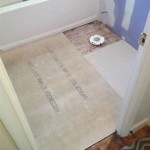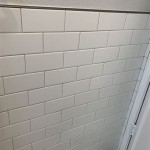Designing The Perfect Ceramic Tile Kitchen Flooring
Ceramic tile has long been a popular choice for kitchen flooring, and for good reason. Its inherent durability, resistance to water and stains, and wide array of aesthetic options make it a versatile and practical solution for a space that sees heavy foot traffic and is prone to spills. Designing the perfect ceramic tile kitchen floor, however, requires careful consideration of several factors, ranging from the tile material itself to the overall design and installation process. A strategic approach ensures a flooring solution that is not only visually appealing but also functional and long-lasting.
Selecting the Right Type of Ceramic Tile
The term "ceramic tile" encompasses a wide range of materials, each with its own characteristics and suitability for different applications. Understanding these differences is crucial for selecting the right tile for a kitchen environment. Key distinctions lie in the tile's composition, manufacturing process, and performance ratings. Porcelain tile, for example, is a denser and less porous option compared to non-porcelain ceramic tile. This inherent density makes it more resistant to water absorption, making it an ideal choice for kitchens where spills are common. Porcelain tiles are often certified by the Porcelain Enamel Institute (PEI) and can possess a PEI rating ranging from 1 to 5, with higher numbers indicating greater resistance to abrasion. The minimum PEI rating for kitchen flooring is typically 3, but a rating of 4 or 5 is generally recommended in high-traffic areas.
Non-porcelain ceramic tiles, while generally less expensive than porcelain, can still be a viable option for kitchens, particularly in areas with lower foot traffic. However, it is essential to consider their higher water absorption rate and ensure they are properly sealed to protect against stains and water damage. The sealant used should be specifically designed for ceramic tile and reapplied periodically, as recommended by the manufacturer. Natural stone tiles, such as slate or travertine, although visually appealing, require more maintenance and may be more susceptible to staining and scratching. These options should be carefully evaluated based on lifestyle and willingness to commit to regular upkeep.
Beyond material considerations, the size and shape of the tile also influence both the aesthetic and functional aspects of the flooring. Larger tiles can create a more seamless look, minimizing grout lines and making the floor easier to clean. Smaller tiles, on the other hand, can be used to create intricate patterns and designs, adding visual interest to the space. Rectangular tiles, often referred to as plank tiles, are gaining popularity for their ability to mimic the look of hardwood flooring, providing the warmth of wood with the durability of ceramic. Consider the overall size and layout of the kitchen when selecting tile size and shape to ensure a balanced and harmonious design.
Color, Pattern, and Texture Considerations
The color, pattern, and texture of the ceramic tile significantly impact the overall look and feel of the kitchen. Choosing the right combination can enhance the space's aesthetic appeal and create a desired ambiance. Lighter colors, such as whites, creams, and light grays, can make a small kitchen appear larger and brighter, reflecting light and creating a sense of openness. Darker colors, such as blacks, browns, and deep grays, can add a touch of sophistication and warmth but may make the space feel smaller. Consider the existing color scheme of the kitchen, including cabinets, countertops, and walls, when selecting tile colors to ensure a cohesive and harmonious design.
Tile patterns can add visual interest and personality to the kitchen floor. Common patterns include straight lay, staggered lay (brick pattern), herringbone, and checkerboard. The straight lay is a simple and classic pattern that works well with any tile size or shape. The staggered lay adds a touch of visual interest and can help to conceal minor imperfections in the subfloor. The herringbone pattern is a more intricate and sophisticated pattern that adds a touch of elegance. The checkerboard pattern is a classic and timeless pattern that adds a playful and retro feel. When selecting a tile pattern, consider the size and shape of the kitchen and the desired aesthetic. A larger kitchen can accommodate more complex patterns, while a smaller kitchen may benefit from a simpler pattern.
Tile texture also plays a significant role in the overall look and feel of the kitchen. Smooth tiles are easy to clean and maintain but can be slippery when wet. Textured tiles provide better traction and are less prone to slipping, making them a safer option for kitchens. Textured tiles can also add visual interest and dimension to the floor. Common tile textures include matte, honed, and textured. Matte tiles have a non-reflective surface that is easy to clean and maintain. Honed tiles have a slightly polished surface that provides a subtle sheen. Textured tiles have a raised or patterned surface that provides added traction and visual interest. When selecting a tile texture, consider the safety of the kitchen and the desired aesthetic. In high-traffic areas or households with young children or elderly individuals, a textured tile is generally recommended.
Proper Installation and Maintenance
Even the highest quality ceramic tile will not perform optimally if it is not installed correctly. Proper installation is crucial for ensuring the longevity and durability of the flooring. The subfloor must be properly prepared and leveled before installing the tile. Any imperfections in the subfloor can cause the tile to crack or become uneven over time. A concrete backer board is typically used to create a stable and level surface for the tile. The tile should be installed using a high-quality thin-set mortar that is specifically designed for ceramic tile. The mortar should be applied evenly and consistently to ensure proper adhesion. Grout is used to fill the spaces between the tiles and should be selected to complement the tile color and design. The grout should be sealed to protect against stains and water damage. A professional tile installer can ensure that the tile is installed correctly and that the finished product is aesthetically pleasing and long-lasting.
Regular maintenance is essential for keeping the ceramic tile kitchen floor looking its best. Sweep or vacuum the floor regularly to remove dirt and debris. Wipe up spills immediately to prevent stains. Clean the floor periodically with a mild detergent and water. Avoid using harsh chemicals or abrasive cleaners, as they can damage the tile and grout. Reapply sealant to the grout periodically, as recommended by the manufacturer, to protect against stains and water damage. Inspect the floor regularly for cracks or chips and repair them promptly to prevent further damage. By following a regular maintenance routine, the ceramic tile kitchen floor can provide years of beauty and functionality.
Consider the use of grout with antimicrobial properties. Certain grout products are formulated to resist the growth of mold and mildew, particularly beneficial in damp kitchen environments. Furthermore, the width of the grout lines can also have an impact on the ease of cleaning. Narrow grout lines are generally easier to keep clean than wider grout lines.
Finally, plan for transitions between the ceramic tile flooring and other flooring types in adjacent rooms. Transitions should be smooth and seamless to prevent tripping hazards and create a unified look. Transition strips are available in a variety of materials and styles to match the tile and other flooring types. Carefully consider the transition details to ensure a polished and professional finish.

Best Tile For Kitchen Floor How To Make The Right Choice Welcome Rubi Tools Blog

Ceramic Tile Kitchen Floor Pros Cons And Best Designs Stone Depot

How To Choose The Perfect Kitchen Floor Tiles H R Johnson

Ceramic Tile Kitchen Floor Pros Cons And Best Designs Stone Depot

5 Important Ways To Find The Perfect Kitchen Floor Tiles Todz Terior Best Interior Design In Gambas Crescent Singapore

Ceramic Tile Kitchen Floor Pros Cons And Best Designs Stone Depot

Tile Flooring Ideas For Every Space Architectural Digest

Top 5 Kitchen Layout Ideas And Tile Designs For Perfection

Best Floor Tiles For Kitchens

Ceramic Tile Kitchen Floor Pros Cons And Best Designs Stone Depot
Related Posts








